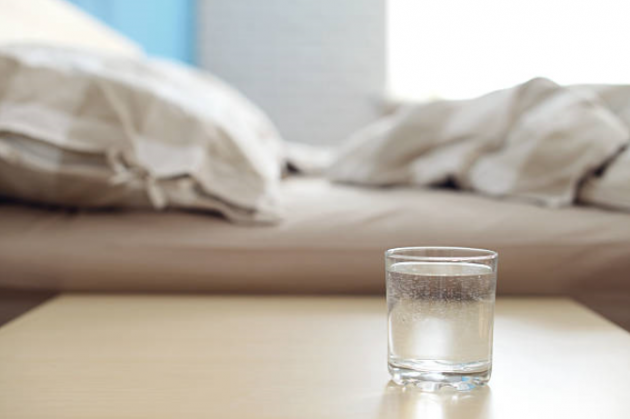With more than 30 years’ experience in the residential and commercial water treatment space, Mark Nelson is a Class 1 Drinking-Water Operator and a CBWA (Canadian Bottled Water Association) Certified Plant Operator. As founder and president of Nelson Water in Ottawa, Mark focuses on dealing with challenging water treatment system designs for problem water. He also heads the largest water bottling plant in the city of Ottawa with a delivery network throughout the Valley.
If you’ve ever left a glass of water sitting on your bedside table, you’re likely to have noticed that it tastes stale in the morning. So, does this mean that your water has gone bad and is it safe to drink?
The Basics of “Old” Water
If water is left sitting out for a few hours, it inevitably develops a stale taste. There are a number of reasons for this, and this can impact whether it is safe to drink. Old water tends to have high levels of microorganisms present. Our mouths contain bacteria that is transferred into the water when you take a sip from the glass. This is often joined by dust and other airborne debris floating around your home. Initially, any microorganisms are killed by the chlorine residues in your tap water, but after a few hours at room temperature, the microorganisms will multiply at a fast rate. This leaves a stale taste that would not occur if a bottle of clean water was in a clean open bottle in your fridge.
Although it is important to understand that your old water may contain microorganisms, this is not the reason why old water tastes stale. The stale taste is usually due to carbon dioxide. This is most noticeable in soda when it starts to go flat, the carbon dioxide dissolves in the water forming carbonic acid, creating acidity. In plain water, carbon dioxide from the atmosphere begins to dissolve in the liquid, creating a mild acid rain taste.
Is Day Old Water Safe?
Whether you’ve had water sitting on your bedside table overnight or have a bottle of water in storage for a while, you need to know if it’s still safe to drink. Generally, if you’re a healthy person, the microorganisms in old water are not likely to be problematic. The danger arises when you’re using a dirty glass repeatedly and if you’re sharing a glass with someone else. These scenarios will increase the chances of bacteria creating problems. Providing you’re using a clean glass, and the glass rim has not been touched with unwashed, dirty fingers, you’re not likely to have a problem.
If you’re not using a glass and have a plastic bottle of water by your bedside, there is an increased risk of potential problems. If your plastic bottle is left out in a sunny spot, there is a risk of BPA leaching into the water. BPA is used during the manufacturer of many plastic products, and it has been shown to be a hormone disruptor linked to a number of health issues including increased risk of heart disease and cancer.
When Old Water Should Be Ditched
If your drinking water has been stored for an extended period, it will reach a point where it needs to be ditched. Most experts agree tap water has a shelf life of approximately 6 months. At this point, the chlorine residue in the water will dissipate and allow algae and bacteria to begin to grow. This process can be accelerated if the water is stored in warm, sunny conditions or in an improperly sealed or cleaned container. If in doubt, it is best to err on the side of caution and go for a fresh glass.

